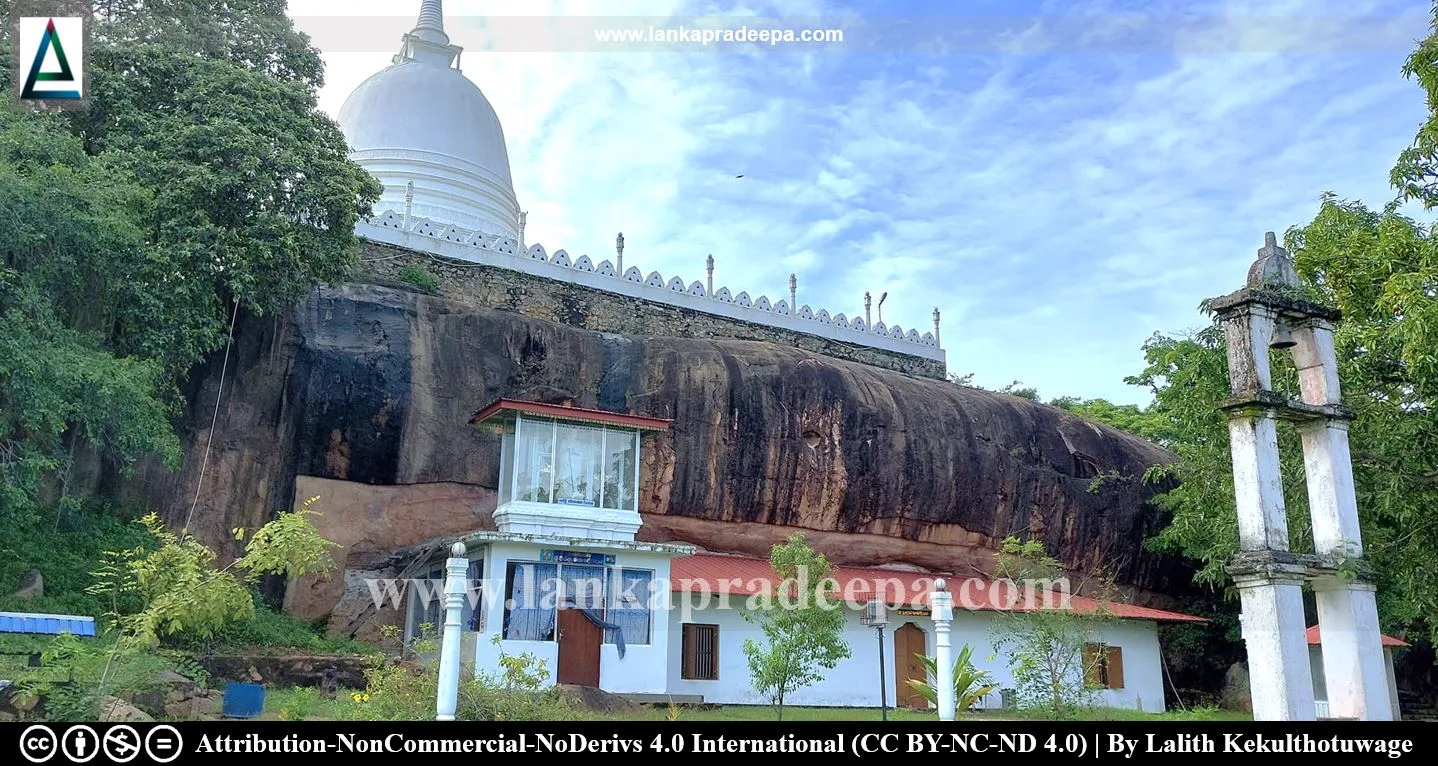
Doramadalawa Raja Maha Viharaya (Sinhala: දොරමඩලාව රජමහා විහාරය) is a Buddhist temple situated in Doramadalawa (or Dunumadalawa/Dunumandalakanda) village in Anuradhapura District, Sri Lanka.
History
Doramadalawa is traditionally supposed to be the village connected with the story of Pandukabhaya (reigned in the 5th-4th century B.C.) in the Mahavamsa (Dias, 1991; Paranavitana, 1983). Chronicles reveal that after giving birth to Prince Pandukabhaya, Chithra, the mother of the prince secretly sent him through a woman to the village named Dvaramandalaka for the sake of his protection (Ray, 1959). Due to the similarity of the name, locals have tended to believe that ancient Dvaramandalaka is none other than the present Doramadalawa/Dunumadalawa village. However, according to the view of Senarath Paranavitana, this belief cannot be accepted as trustworthy (Paranavitana, 1983).
Due to the presence of inscriptions dating from the 2nd century B.C. to the 1st century A.D., the history of Doramadalawa Viharaya can be dated back to the early part of the Anuradhapura Period (Nicholas, 1963; Paranavitana, 1970). The Department of Archaeology copied two inscriptions in 1968 and documented it under register nos. 2721 and 2722 (Dias, 1991).
Doramadalawa Vihara cave inscription
Period: 2nd century B.C. Language: Old Sinhala Script: Early Brahmi
Transcript: Gamika-Pacala puta gamika Dutaka Tisa [puta gamika Abayaha lene agata] anagata catudisha shagasha
Translation: The cave of the villager Abhaya, son of the villager Dutaka Tisa and grandson of the villager Pacala, was given to the Sangha of the four quarters, present and absent.
Citation: Dias, 1991.
There is a rock inscription to the right of the rock-cut flight of steps leading to the summit from the cave temple and it mentions the name of King Bhatikatissa (22 B.C.-7 A.D.), the son of Kutakannatissa [(44-22 B.C.) Muller, 1883; Paranavitana, 1983]. Higher up on the rock is another inscription of about the same age (Muller, 1883; Paranavitana, 1983).
A protected site
The four drip-ledged rock caves with Brahmi characters and a rock inscription within the precincts of the Doramadalawa Rajamaha Vihara, situated within the Grama Niladhari Division of 587-Doramadalawa in Mihintale Divisional Secretary’s Division are archaeological protected monuments, declared by the government Gazette notification published on 23 January 2009.

.
Attribution
#) LankaPradeepa.com extends its gratitude to Lalith Kekulthotuwage for providing the necessary photographs required for this article. All the photos are published here with the permission of the author.
References
1) Dias, M., 1991. Epigraphical notes (Nos 1 -18). Colombo: Department of Archaeology. pp.1-5.
2) Muller, E., 1883. Ancient Inscriptions in Ceylon. London. pp.29,74.
3) Nicholas, C. W., 1963. Historical topography of ancient and medieval Ceylon. Journal of the Ceylon Branch of the Royal Asiatic Society, New Series (Vol VI). Special Number: Colombo. Royal Asiatic Society (Ceylon Branch). p.160.
4) Paranavitana, S., 1970. Inscriptions of Ceylon: Volume I: Early Brahmi Inscriptions. Department of Archaeology Ceylon. p.15.
5) Paranavitana, S., 1983. Dunumandalakanda rock inscription of Bhatika. Inscriptions of Ceylon, Late Brahmi Inscriptions, 2 (part 1). Archaeological Survey of Sri Lanka. pp.9-10.
6) Ray, H.C. (Editor in chief), 1959. History of Ceylon: Vol. I: Part I. Ceylon University Press. Colombo. p.106.
7) The Gazette of the Democratic Socialist Republic of Sri Lanka. No: 1586. 23 January 2009. p.109.
Explore Other Nearby Attractions
Location Map (Google)
This page was last updated on 14 October 2023

